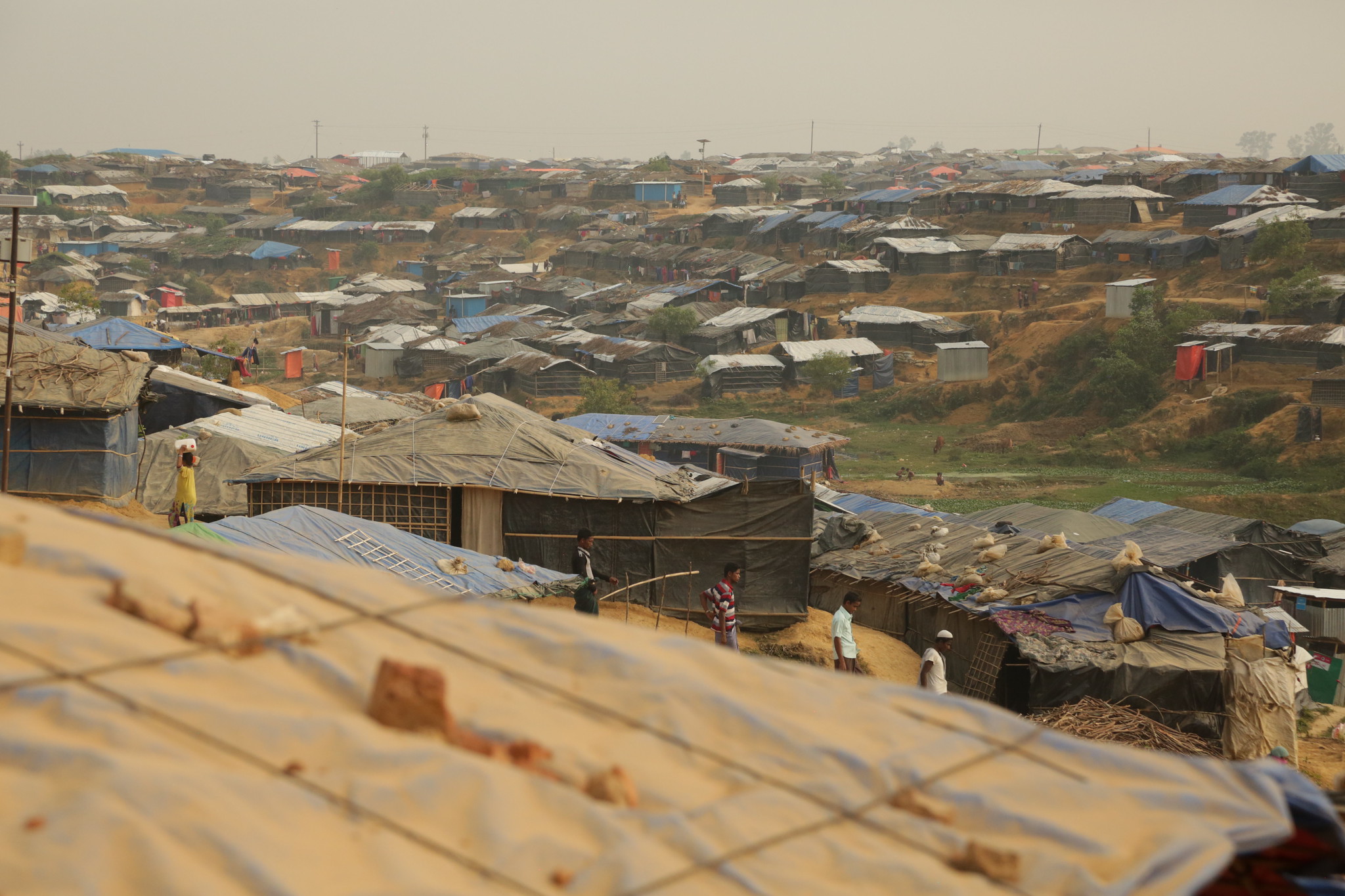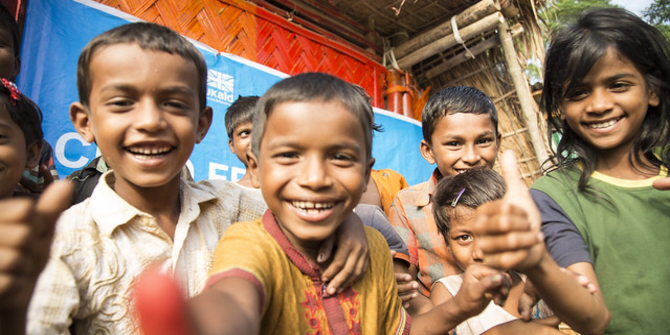 One month ago today Sohagi Jahan Tonu, a university student at Comilla Victoria College, was found dead in a secured military cantonment. Her murder and suspected rape has sparked widespread outrage on social media, followed by massive student protests in Dhaka and further afield. Tasmiah Rahman considers why this particular murder has created such a stir, and argues that the protests are reflective of both the handling of the case and wider grievances against law enforcement agencies.
One month ago today Sohagi Jahan Tonu, a university student at Comilla Victoria College, was found dead in a secured military cantonment. Her murder and suspected rape has sparked widespread outrage on social media, followed by massive student protests in Dhaka and further afield. Tasmiah Rahman considers why this particular murder has created such a stir, and argues that the protests are reflective of both the handling of the case and wider grievances against law enforcement agencies.
Tonu was an ordinary 19 year old girl, who got unlucky. According to the initial posts on Facebook, her body was found near Comilla cantonment, outside Comilla city in eastern Bangladesh, on 20 March and there was evidence she had been raped before she was murdered. When she did not return home after tutoring a student, her father started looking for her. Little did he know that he would have to find his daughter lying lifeless near a culvert. Her head had been crushed, her hair pulled out and she had sustained injuries all over her body.
The news of the murder took social media by storm. The day after she was found, the hashtag #JusticeforTonu began to circulate in protest. Newspapers also began to publish numerous articles on rape and how such crimes are on the rise due to lack of timely punishment. Looking at the rape statistics, there has been a marked increase in recent years. According to police headquarters data, in 2014, some 4,642 rape cases were filed, up from 4,538 in 2013. The One Stop Crisis Centre of Dhaka Medical College reports that four to five women are reported to be raped every day, while the Women and Child Repression division of the police has recorded 21,220 cases of abuse in 2015. According to Ain o Shalish Kendro, a prominent national legal aid and human rights organisation, in January-February 2016, there were 105 rape incidents reported. In three cases the victim had died and two had committed suicide after the rape. These are only a glimpse of rapes and abuses as many go unreported given the social stigma around such incidents.
Rape news is thus common in Bangladesh. But why Tonu’s murder in particular resulted in such strong social media outcry followed by a nationwide protest, needs further probing. Below are a few issues that I believe are essential to look at while investigating the murder and its relation to the public protests:
1. Enough is enough: Tonu’s friends on social media started posting the news of her death and asked others to share it. Many have expressed how they knew her and how much she was loved. For the first couple of days, the murder was not reported by prominent media houses, but her friends vocally criticised their silence and demanded that her story be heard. They also put pressure on the police to put proper effort in investigating her murder.
The protests on social media soon turned into protests on the streets. Even though the demonstrations began in Comilla, they quickly spread in other districts like Dhaka and Chittagong. A Facebook page was set up titled, ‘We are Tonu’ encouraging university students in Dhaka and nationwide to support the protests, and Dhaka University students called for a temporary closure of educational institutions on April 3. Gonojagoron Mancha, a platform for mass protests established after the sensational war crimes tribunal in Bangladesh, also endorsed the growing movement. They helped to mobilise 30,000-40,000 students to block one of the main intersections in the capital, and announced a month-long programme demanding maximum punishment for the criminals. The slogans spoke out against oppression and justice being denied to victims and their families.
2. No trust in the investigation: Tonu’s body underwent two autopsies. After the first autopsy, the police reported that Tonu was raped and murdered. Nine days after the murder when the police had failed to make headway on the killer/s, the case was handed over to the Criminal Investigation Department on the basis that they are better equipped to carry out ‘sensitive’ investigations. As the first report failed to explain the cause of death, Tonu’s body was exhumed for the second autopsy. This time, there were allegedly no signs of rape found but the exact details were unclear as the report was not made public. The chaotic investigation therefore stirred further frustration amongst the public.
3. Class struggle: Tonu’s father was a fourth class worker in the cantonment board. Even though they lived in a protected area like the cantonment, many speculated that had he been someone influential, his daughter’s case would have attracted more attention from the law enforcement agencies. Tonu had been travelling home from tutoring students, a job she did to boost her family’s income. Many other middle class students take on tutoring to earn money for tuition or pocket money so she was someone public university students could relate to.
The rights organisation Ain o Shalish Kendro added its voice to the protest when stories of ‘harassment’ and interrogation of family members surfaced. Reports suggested law enforcement agencies were pressurising Tonu’s parents to agree to their own prescribed statements. Campaigners and protestors alike objected to the apparently tangible example of the ill treatment of the poor and middle class that is practiced in every sphere of the society.
4. Law makers are the breakers: there has been speculation that the perpetrators were law enforcers themselves, given that her body was found in a high security military cantonment. Even though there are laws are in place, loopholes in the legal system and the lack of effective implementation mean people with power can invariably go without being punished or even identified. Stories of rapists threatening family members and witnesses are not uncommon. Even when ordinary citizens know who is responsible for crimes like abuse, rape and murder, many family members and witnesses are silenced as a result of intimidation by law enforcers, political goons and by influence of money and political power.
5. Modesty does not keep you safe: the young demonstrators are challenging the age old mainstream belief of victim blaming by both the society and the law enforcement agencies. Tonu wore a hijab and practiced Islam, underlining that attire can never protect a women from being targeted and sparking debates on the issue of ensuring the safety of all women, not just women that cover themselves.
***
The younger generation is demanding justice not just for Tonu but for all victims of rape and murder that go unpunished. The social media and media messages are calling for exemplary justice, so that other girls like Tonu do not have to live in fear. Yet exactly a month after the murder the criminals remain at large, and the police do not even seem close to capturing the culprits, just as so many of the protesters anticipated.
Having said that, this discussion highlights the ‘We are Tonu’ movement is also based on wider grievances which demonstrate the youth in Bangladesh are tired and frustrated with the current institutions and power structures. Issues like those outlined above need to be discussed more widely and addressed at national level so that effective preventive measures can be taken.
This article gives the views of the author, and not the position of the South Asia @ LSE blog, nor of the London School of Economics. Please read our comments policy before posting.
About the Author
 Tasmiah Rahman recently graduated from LSE with an MSc in Social Policy and Development. She is currently working as a Senior Manager, Monitoring Results Measurement and Communications in an international NGO in Bangladesh
Tasmiah Rahman recently graduated from LSE with an MSc in Social Policy and Development. She is currently working as a Senior Manager, Monitoring Results Measurement and Communications in an international NGO in Bangladesh







